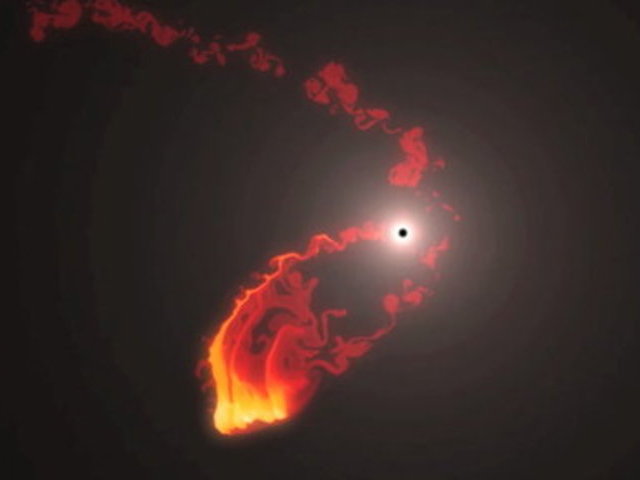I⊥∀NIW∩LLIʞ
Admin


Posts : 1386
Reputation : 3
Join date : 2012-12-27
 |  Subject: Colossal cosmic collision coming this year at center of the galaxy, say awestruck astronomers Subject: Colossal cosmic collision coming this year at center of the galaxy, say awestruck astronomers  Sun Feb 03, 2013 12:18 am Sun Feb 03, 2013 12:18 am | |
|  February 3, 2013 – SPACE - A giant gas cloud is on collision course with the black hole in the center of our galaxy in 2013. This is a unique opportunity to observe how a super massive black hole sucks in material, in real time. The black hole at the centre of the galaxy, formally known as Sagittarius A*, fascinates scientists. By mid-2013 a gas cloud is expected to pass in its vicinity at a distance of only 36 light-hours (equivalent to 40.000.000.000 km), which is extremely close in astronomical terms. So-called super massive black holes are the largest type of black holes. Their mass equals hundreds of thousands to a billion times the mass of our sun. The centre of all galaxies is thought to contain super massive black holes. But their origin is not fully understood and astrophysicists can only speculate as to what happens inside them. Hence the imminent collision is of great interest to scientists as it should provide some new insights. Reinhard Genzel leads the team of astronomers from the European Southern Observatory which has discovered the gas cloud about to collide with the black hole at the heart of our galaxy and studied its trajectory. According to their observations, its speed has nearly doubled in the last seven years, reaching more than 8 million km/h. The cloud’s edges have already started to shred and it is expected to break up completely over the coming months. As we near the collision, the cloud is expected to get much hotter. It will also probably start to emit X-rays as a result of the interaction with the black hole. This event will provide astronomers and astrophysicists a unique opportunity to observe how a gas cloud behaves so close to one of the most mysterious objects in our universe. Black k holes are invisible because their extreme gravity even light swallowed. However, if a black hole accretes matter from its surroundings, this material is heated and glows brightly in X-rays. In addition to the accretion disk around the black hole often form-energy particle beams, called jets, in which high-energy plasma leaves the system. These jets are also driven by the gravity of the black hole and emit a strong radio signal. Accretion disks and jets are thus two aspects of the same phenomenon, and by astronomers examine both simultaneously, they can take a close look at the physical processes that occur in the vicinity of a black hole. more here: http://extinctionhq.com/colossal-cosmic-collision-coming-this-year-at-center-of-the-galaxy-say-awestruck-astronomers/ | |
|





